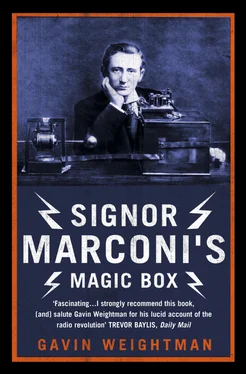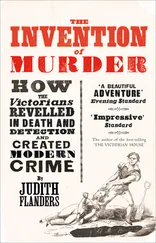Flatholm to Lavernock seemed to Preece the ideal testing ground for Marconi’s novel wireless system, and in May 1897 he arranged for an experiment which would demonstrate the potential of his protégé’s equipment. Although Preece had publicly expressed great faith in Marconi’s invention, he was not at all sure that these magic boxes could send and receive signals over any great distance. By nature he was a risk-taker, but over his long career some embarrassing experiences had taught him caution. There was the time in 1877 when the young Alexander Graham Bell, not quite thirty years old, was invited to demonstrate his new invention, the telephone, to Queen Victoria at her summer home, Osborne House on the Isle of Wight.
Beginning at 9.30 p.m., Bell, with the help of Preece, had created a link between the main house and a cottage in the grounds so that the Queen could speak to two aristocrats familiar to her. She listened also to a rendition of the song ‘Coming Through the Rye’ sung by an American journalist called Kate Field, who had been hired to write promotional articles about the telephone. The Queen was most impressed as calls and performances came in from Cowes, Southampton and London. The grand finale was to be ‘God Save the Queen’, played by a brass band in Southampton. This had been William Preece’s patriotic idea. But as Her Majesty waited for the burst of music, the line from Southampton went dead. By the time it was fixed the musicians had packed away their tubas and trumpets and gone home. Not wanting to disappoint everybody after such a successful day, Preece himself put his mouth to the microphone and hummed the national anthem down the line, putting as much oompah into his rendition as he could. After listening for a few moments, Queen Victoria is said to have remarked: ‘It is the national anthem, but it is not well played.’
Preece was aware that he might be in for another embarrassing experience in the cause of technological advance when he asked Marconi to send a signal from Flatholm to Lavernock. There was an element of rivalry in the experiment, for Preece regarded himself as an old hand at this business of telegraphing without wires, and wanted a demonstration of the merits of his own system alongside that of the young Italian. Despite his apparent enthusiasm for Marconi’s invention, Preece appears to have hedged his bets, and was not convinced that it would have more than a very limited value to the Post Office. It was still a novelty, and might turn out to be no more than that.
While Marconi assembled his transmitter on Flatholm Island and a receiving station on the cliff at Lavernock, Preece had already had lengths of wire put in place, running in parallel on either side of the Bristol Channel. When an electric charge was sent through one of these wires it would emit waves which were picked up by the other, and a charge was made to ‘jump’ across the space between, just like the ‘crossed lines’ that had caused problems with telephones and telegraphs in the City. By turning the current on and off, it was possible to send the dots and dashes of Morse code. Preece had used this ‘induction’ system as a temporary link between the Isle of Skye on the west coast of Scotland and the mainland when the telegraph cable snapped, and knew it worked across the Bristol Channel.
Preece presumably did not imagine he was about to witness anything of historic importance as he waited in the buffeting breezes for Marconi’s signals to come through to Lavernock Point. He was, after all, the head of a British government department which dominated cable telegraphy worldwide, and which could hardly be threatened by a young amateur scientist and his makeshift apparatus. Preece had invited a German Professor, Adolphus Slaby of the Technical High School at Charlottenburg, near Berlin, to witness the demonstration. Slaby had read about Marconi’s ability to send signals over quite long distances, although he himself had had much less success.
Lavernock Point is about sixty feet above sea level. Marconi had an aerial put up which rose a further sixty feet in the air, and was topped with a zinc cylinder connected to a receiver which had been set up to record signals in Morse code on a tickertape. Another wire went from the receiver down the cliff to the seashore. The transmitter, firing off a crackle of sparks, was three miles away on Flatholm Island. For two tense days nothing came through on the Lavernock receiver. In desperation, Marconi had the receiver taken down to the beach below the cliff, to see if that made any difference. Almost instantly it began to work.
While William Preece did not really grasp the significance of the occasion, an amazed Professor Slaby certainly did. ‘It will be for me an ineffaceable recollection,’ he said later. ‘Five of us stood round the apparatus in a wooden shed as a shelter from the gale, with eyes and ears directed towards the instruments with an attention which was almost painful, and waited for the hoisting of a flag which was the signal that all was ready. Instantaneously we heard the first tic tac, tic tac, and saw the Morse instrument print the signals which came to us silently and invisibly from the island rock, whose contour was scarcely visible to the naked eye – came to us dancing on that unknown and mysterious agent the ether!’ He wrote up an account of what he had witnessed for the American Century Magazine, which was published in April 1898.
In January, 1897, when the news of Marconi’s first successes ran through the newspapers, I myself was earnestly occupied with similar problems. I had not been able to telegraph more than one hundred metres through the air. It was at once clear to me that Marconi must have added something else – something new – to what was already known, whereby he had been able to attain to lengths measured by kilometres. Quickly making up my mind, I travelled to England, where the Bureau of Telegraphs was undertaking experiments on a large scale. Mr. Preece, the celebrated engineer-in-chief of the General Post-Office, in the most courteous and hospitable way, permitted me to take part in these; and in truth what I there saw was something quite new. Marconi had made a discovery. He was working with means the entire meaning of which no one before him had recognised. Only in that way can we explain the secret of his success.
Slaby hurried back to Germany with Marconi’s secret, and set to work replicating as best he could the brilliant success of the Bristol Channel experiment.
Having returned to my home, I went to work at once to repeat the experiments with my own instruments, with the use of Marconi’ s wires. Success was instant … Meantime the attention of the German Emperor had been drawn to the new form of telegraphy … For carrying out extensive experiments, the waters of the Havel River near Potsdam were put at my disposal, as well as the surrounding royal parks – an actual laboratory of nature under a laughing sky, in surroundings of paradise! The imperial family delight to sail and row on the lakes formed by the Havel; therefore a detachment of sailors is stationed there during the summer, and I was permitted to employ the crews as helpers.
And so it was that Marconi’s first benefactor, William Preece, had unwittingly enabled the nation which was for many years to be a bitter rival of Britain in the development of wireless telegraphy to indulge in a blatant piece of industrial espionage. With the backing of Kaiser Wilhelm II, who wanted Germany to excel in all fields of technology, and demanded that scientists be given state backing, Professor Slaby joined forces with others to develop a Teutonic version of the Italian’s new and quite magical means of communication. Meanwhile, Preece established his own induction wireless link across the Bristol Channel, and remained sceptical about the potential of Marconi’s use of Hertzian waves.
Читать дальше












